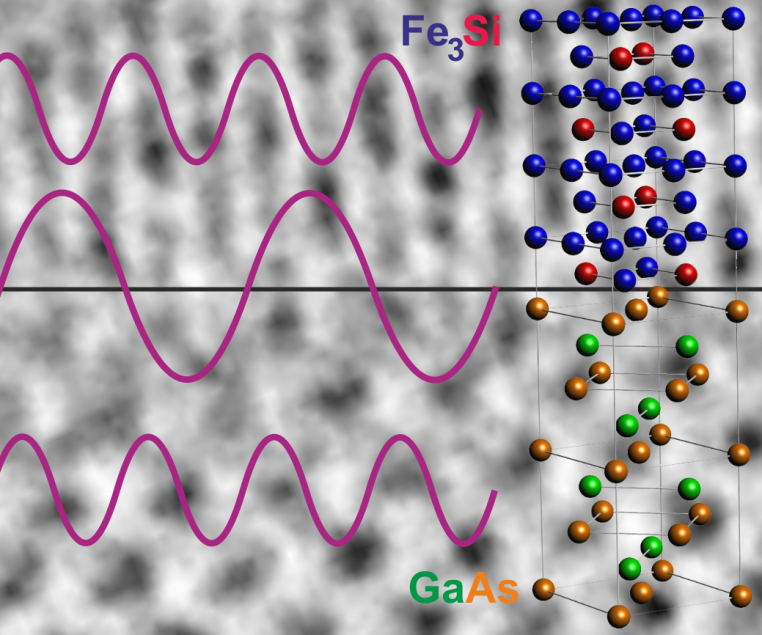Understanding atomic vibrations at interfaces
The contact area (interface) between two dissimilar materials is very often a source of (anomalous/unusual) physical phenomena which form the basis of many modern technologies which have significant influence in our everyday life, such as optoelectronics, nanoelectronics, photovoltaics and magnetic recording.
Propagating lattice vibrations, known as phonons, are responsible for the transmission of sound and heat in solids. In addition, by coupling to electrons and magnons they influence remarkably many materials properties. Due to the broken translational symmetry, the atomic vibrations at interfaces are drastically modified compared to their bulk counterparts. This implies anomalies in thermal conductivity, specific heat capacity, speed of sound, elastic constants and other important, application-relevant quantities. A comprehensive understanding of the interface lattice dynamics is therefore of fundamental importance for basic and applied research.

Using the isotopic sensitivity of the Mössbauer effect and the high penetration depth of the X-rays delivered by the world’s brightest synchrotron radiation source PETRA III, we have employed nuclear inelastic scattering to measure the Fe-partial phonon density of states in Ge/Fe3Si/GaAs layer stacks in high quality epitaxial Fe3Si/GaAs heterostructures – a promising candidate for applications in magnetic and spintronic devices.
The experimental results reveal a drastic enhancement of the low-energy phonon states and suppression and broadening of all phonon peaks as the Fe3Si layer thickness is reduced, see Fig. 2. Due to the perfect matching of the Fe3Si lattice constant with that of the GaAs, the impact of epitaxial strain on the interface lattice dynamics can be excluded.
Modeling of the experimental results with state-of-the art, layer- and element resolved first-principles calculations reveals that the observed anomalies originate from novel, interface-specific phonon states. The broken translational symmetry at the interface drastically reduces the atomic force constants, with the effect being stronger along the interface. The broadening and suppression of the peaks is induced by defects at the Fe3Si/GaAs interface and by the capping Ge layer. Further from the interface, the vibrational anomalies vanish and bulk lattice dynamics sets in within several atomic layers.
The comprehensive quantitative understanding of the interface lattice dynamics obtained in this study paves the way towards phonon nanoengineering in two-dimensional systems. This will have implications on designing efficient thermoelectric heterostructures and will stimulate further progress in thermal management and nanophononics.

Publication
J. Kalt, M. Sternik, I. Sergeev, J. Herfort, B. Jenichen, H.-C. Wille, O. Sikora, P. Piekarz, K. Parlinski, T. Baumbach, S. Stankov, “Lattice dynamics of epitaxial strain-free interfaces”, Physical Review B 98, 121409(R) (2018)
